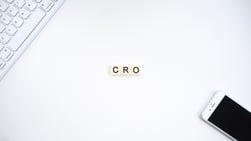Index Content
Ecommerce is becoming more and more widespread, its daily growth is already an undeniable reality. Therefore, every day, the competition that exists within online businesses increases, in order to stay at the top, for this we need to know the KPIs and how they can affect our business.
what are KPIs?
KPI: Key Performance Indicator, they are key parameters to measure the performance of a marketing strategy, as well as the development and end of it.
With them you can know several metrics, such as the traffic of your ecommerce, calculating with it the abandonment rate by calculating how many users enter the page but leave without buying anything. All these variables are measurable, that is, all the data we get with the KPIs are units of measurement. For this and more, you have to establish for your online business the key indicators that help you with the profitability and efficiency of your business. These are not only used in marketing, although in this post, the KPIs that we will discuss are those that are oriented to marketing.
We cannot confuse KPIs with metrics, as metrics are raw data and KPIs are data taken from mathematical operations from metrics. Therefore, without metrics there are no KPIs, but they are not the same, KPIs are more elaborated.
KPIs serve to meet objectives that you set yourself in your marketing strategy, so it is very important in this process that you start by setting objectives within your marketing strategy and then use KPIs to check whether you are meeting them or not.
The 5 most important KPIs in ecommerce
The best KPIs for ecommerce represent the value chain, everything from the moment the user arrives on the website until they return to purchase a product. Below we will look at the most important KPIs and the reasons why they are essential.
1. Conversion rateThe conversion rate in mathematical terms is the division of sales captured by visits received, i.e. visitors who have not only entered your website, but have made a purchase on it. This KPI is very important for your strategy because it measures the level of attraction that your website has for new customers. Here you can see the effectiveness of your strategy, with this valuable information you can define the new actions you are going to carry out, and change or discard actions that are not giving you results. Thus, with this KPI, you can only set actions that meet the objectives.
Within the conversion rate, there are several factors that affect it:
- Design and responsive design:
The design of your website is very important, this must be easy to use as it determines the interaction of the visiting user with the buying process, if it is complicated, the user will decide not to buy, the key is that the buying process of your product or service on your website has as few steps as possible, so that buying is as simple as possible for the user.
responsive design is also very important, if a user decides to enter your website from their mobile phone and finds a page that is cluttered and difficult to use, they will not want to re-enter and will leave the page without buying.
- Calls to action:
A very important factor in which design also takes precedence, if what you offer is visual, clear and contains the appropriate information, the user will feel attracted and will end up making the purchase you expect. Absolute success!
2. Organic repurchase rateThis rate, which is also one of the most important KPIs, tries to determine how many customers, i.e. people who have already bought something on the website, return to the ecommerce to make a purchase again. That this rate is called organic is no coincidence, what is meant by that name is that this process is happening by itself, i.e. the customer comes to the page by himself, because he was happy with his current purchase and wants to buy a product or service again, but no marketing or advertising actions have been used to achieve this.
With this you will be able to calculate the organic power that your website has, as well as calculate the benefits you generate since you will be able to compare what you invest in advertising with what you earn organically.
3. Bounce rateWith this rate what we are measuring is whether your website meets the expectations it should meet, it measures the number of users who enter the page and do not perform any action. This may be due to different factors, for example, the delay of the page to load is one of the most common factors of the bounce rate, we are in recent times before a user bombarded with information, a fleeting user, if he does not have what he wants immediately, he will disappear.
4. ROIWe call ROI the Return on Investment in Online media. It is one of the KPIs that can not miss under any circumstances within your strategy, it determines whether your investment in the marketing campaigns you are following is effective or not.
In mathematical terms, it consists of dividing the sales captured by the amount of investment. This way you will see how much you generate per cent invested. The ROI has to be positive for your investment to be beneficial. All this will allow you to make better decisions regarding the investment and the budget you have available.
5. ROAThis is the Return of Assets, it is similar to ROI, but not the same, it is based on the analysis of the assets that you are using in your company to generate profits.
The formula with which we will find this KPI is as follows: ROA = (Profit / Assets) x 100. With ROA you can also find out which is the most effective communication channel through which to advertise and continue optimising your marketing strategy.
In short, if you take into account these 5 KPIs for your ecommerce, your strategy will be successful for sure, remember, in a marketing strategy, in order to optimise your resources to the maximum you need them to be measurable numerically so that, with the figures, you can see which foot you are limping on and what you should reinforce because it pays off.
cheer up and optimise your marketing strategy with this post!

-1.webp?width=200&name=imagotipo_occam%20(1)-1.webp)



